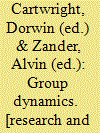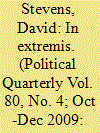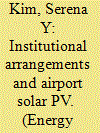|
|
|
Sort Order |
|
|
|
Items / Page
|
|
|
|
|
|
|
| Srl | Item |
| 1 |
ID:
040655


|
|
|
|
|
| Edition |
3rd ed.
|
| Publication |
London, Tavistock Publications Limited, 1953.
|
| Description |
ix, 580p.Pbk
|
| Series |
Social Science Paperback
|
| Standard Number |
422986208
|
|
|
|
|
|
|
|
|
|
|
|
Copies: C:1/I:0,R:0,Q:0
Circulation
| Accession# | Call# | Current Location | Status | Policy | Location |
| 001844 | 658.4036/CAR 001844 | Main | On Shelf | General | |
|
|
|
|
| 2 |
ID:
092645


|
|
|
|
|
| Publication |
2009.
|
| Summary/Abstract |
The main policy reaction to the terrorist attacks of 7/7 and 21/7 of 2005 has been the development of the £6 million 'Preventing Violent Extremism' (PVE) initiative which aims, as part of the government's broader counter-terrorism strategy (CONTEST), to tackle support for, and the promotion of, violent Islamist ideologies within British society. One crucial component of this strategy is providing support for Muslim groups and individuals to tackle radicalisation and extremism directly at the local level. Funding and charitable status for mosques, Muslim community and youth groups and initiatives, 'forums against extremism', anti-extremism 'road shows', and the training of imams are included as part of this strategy. This article argues that this aspect of PVE is not only ill-advised, but potentially deeply counter-productive. It takes issue with two reasons that inform the PVE strategy: first, that what motivates individuals to join extremist groups are the religious ideas themselves; second, that government intervention or involvement is an effective method for rendering the moderate antidote attractive. Arguably, neither of these assumptions is warranted in the face of contrary evidence. Consequently, this arm of PVE is, at best, barking up the wrong tree; at worst, fuelling extremism.
|
|
|
|
|
|
|
|
|
|
|
|
|
|
|
|
| 3 |
ID:
177483


|
|
|
|
|
| Summary/Abstract |
Combining a unique dataset of 488 public airports and interviews with managers and stakeholders at four airports in the United States, this study investigates how airports’ institutional arrangements shape their solar photovoltaic (PV) deployment decisions. The findings indicate that airports operated by general-purpose governments (i.e., city, county, or state governments) are more likely to deploy solar PV than airports operated by special-purpose governments (i.e., port or airport authorities). Airports more involved in the professional associations (e.g., the American Association of Airport Executives) are also more likely to deploy solar PV, but this relationship is stronger for special-purpose airports. Additionally, airport solar PV is less likely to appear in the service area of cooperatives than in the service area of investor-owned utilities. These findings help policymakers understand how airport governance, utility ownership, and involvement in professional associations may promote or hinder renewable energy transitions at airports and other large publicly used properties.
|
|
|
|
|
|
|
|
|
|
|
|
|
|
|
|
|
|
|
|
|